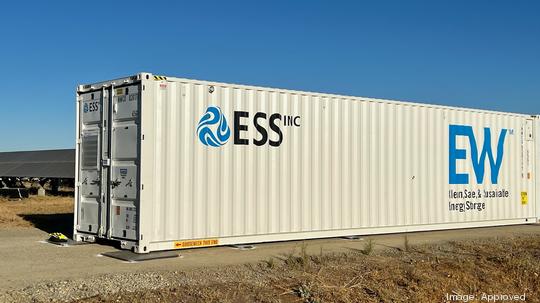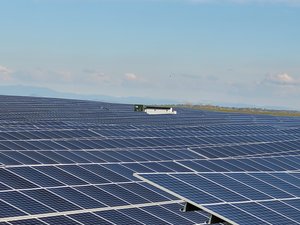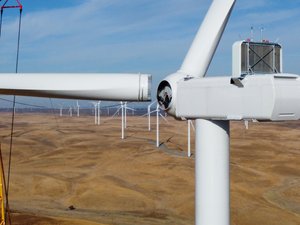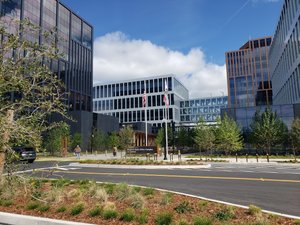
The Sacramento Municipal Utility District is seeking a $10 million grant from the California Energy Commission to study a pilot program using iron-flow batteries in a demonstration of grid reliability.
SMUD has already installed some of the large batteries in Sacramento, but this grant is to test long-duration energy systems for use statewide.
The commission will vote on the grant at its meeting July 10.
Iron-flow batteries are huge, with the ones SMUD uses each being the size of a shipping container.
The advantage is that flow batteries use simple chemistry, and they can cycle tens of thousands of times from charging to releasing energy without losing capacity.
The flow batteries also can sustain longer grid support as they can send out power for eight hours, compared to the four-hour duration for more standard lithium-ion battery technology.
In addition to the long-duration test, the pilot project will also examine the reliability of flow batteries in high temperatures, according to a CEC staff report, which cited the Sacramento region hitting temperatures of 116 degrees in 2023 requiring battery solutions to keep the grid reliable during times of high use.
Part of the proposed grant contract involves keeping the energy commission apprised of the progress of the pilot study during the pilot study, which would run roughly from September this year through August 2029.
In September 2022, SMUD reached an agreement with Wilsonville, Oregon-based ESS Tech Inc. to install some of its iron-flow batteries at SMUD locations in Sacramento.
Each ESS (NYSE: GWH) iron-flow battery is housed in a 40-foot-long shipping container, about the size of a rail car. Each one can store 75 kilowatts of electricity. ESS could build up to 200 megawatts of storage for SMUD. To get to 200 megawatts would take more than 265 iron-flow batteries.
By comparison, SMUD two years ago installed 667-kilowatt lithium-ion battery storage units at its Hedge Solar Farm on Tokay Lane that are housed in 20-foot shipping containers. Lithium ion batteries store nine times the power in half the space.
The money for the CEC grant will come out of the Energy Commission’s Greenhouse Gas Reduction Fund. It is a research pilot and not a competitive bid. The project does not require California Environmental Quality Act reviews.
The pilot study will be done in two phases of 1.8 megawatts each, for total power of 3.6 megawatts. A megawatt is enough to power about 700 homes in California, which has the most energy-efficient housing.
Iron-flow batteries are stable and don’t require the use of rare chemicals. The primary ingredients are iron and saltwater.
SMUD is working on a variety of sustainable electricity, solar power, utility scale agri-solar, wind power and storage projects to meet its net-zero carbon goal by 2030. It set that aggressive goal in 2021. One of the problems of relying on renewables is that sometimes the sun doesn't shine and wind doesn't blow, throwing demand to battery storage. SMUD's zero-carbon goal is 15 years ahead of California’s statewide zero-carbon target of 2045, which is the most advanced in the country.
SMUD is the sixth-largest community-owned electric provider in the country. Its power mix surpassed 50% non-carbon-emitting power sourced in 2019. The utility also plans to shutter and retire its natural gas-fired generators before 2030.









